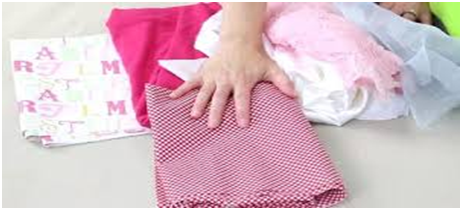If you’re fairly new to making your own clothes then choosing fabric for clothes is the most important first step in sewing a garment. Picking the wrong choice can mean a very unsuccessful and frustrating project which might put you off future projects. Fortunately, there are usually a few right fabric options for any pattern, so its not too tricky to pair up a fabric and pattern successfully. For Cotton Fabric, visit https://www.higgsandhiggs.com/fabrics/plain-cotton-fabric.html.
When starting a sewing project, youll either have fallen in love with a pattern and need fabric to make it out of, or youll have fallen in love with a fabric and need to find a suitable pattern to go with it. If you already have a pattern then it should tell you which types of fabrics the pattern is designed for. There are no punishments for deviating from a pattern’s advice, but if you’re a beginner, it’s safer to stick to the advice. The advised fabrics will have the correct weight and elasticity to complement the design.
The most common types of fabric used in sewing are the following:
- Cotton lawn is a lightweight, semi-sheer, crisp fabric
- Cotton voile – is a lightweight, semi-sheer fabric which hangs well and is not as crisp as cotton lawn
- Rayon challis – is a smooth, lightweight fabric that drapes well and is slightly heavier than other lightweight fabrics, like cotton voile and cotton lawn
- Denim – a heavyweight material with little stretch
- Chambray – is a smooth, lightweight fabric but it doesn’t drape as well as rayon challis, cotton voile or cotton lawn
- Knit there are a few types of knit from lightweight to medium weight. This fabric is ideal for any design that needs a good deal of stretch
- Silk – a lightweight, slippery fabric which can be awkward to work with. It is delicate and hangs beautifully with a shimmery appearance. Great for use as a lining fabric.
- Double gauze – is a unique fabric in that it is literally two layers of gauze woven together. The double layer of fabric gets rid of the main problem of sewing clothing from gauze the sheerness, while retaining the good qualities – light and breathable
- Satin – a fabric that can vary from light to heavyweight, depending on the type of satin. It has a shiny look and feel, like silk.
- Linen – is a medium-weight fabric with little elasticity which is why it wrinkles so much. But it conducts heat very well, which is why its a popular choice for warm-weather clothing
- Wool – with over 200 different types of wool, coming from 40 different breeds of sheep, the weight will vary depending on the type of wool. Wool is incredibly hard-wearing and versatile and as its very warm this makes it a good choice for colder weather clothing.
If you have already chosen a fabric that you’re dying to use then here are some ideas of what to use it for:
- Trousers – Linen for spring and summer wear or denim, flannel or wool for autumn and winter
- Blouses and shirts – Cotton voile, rayon challis, double gauze, knit, silk, chambray, cotton lawn, linen or flannel
- Dresses Cotton voile, cotton lawn, double gauze, rayon challis, silk, knit, satin, linen and wool
- Skirts – Cotton lawn, rayon challis, denim, linen and knit.



